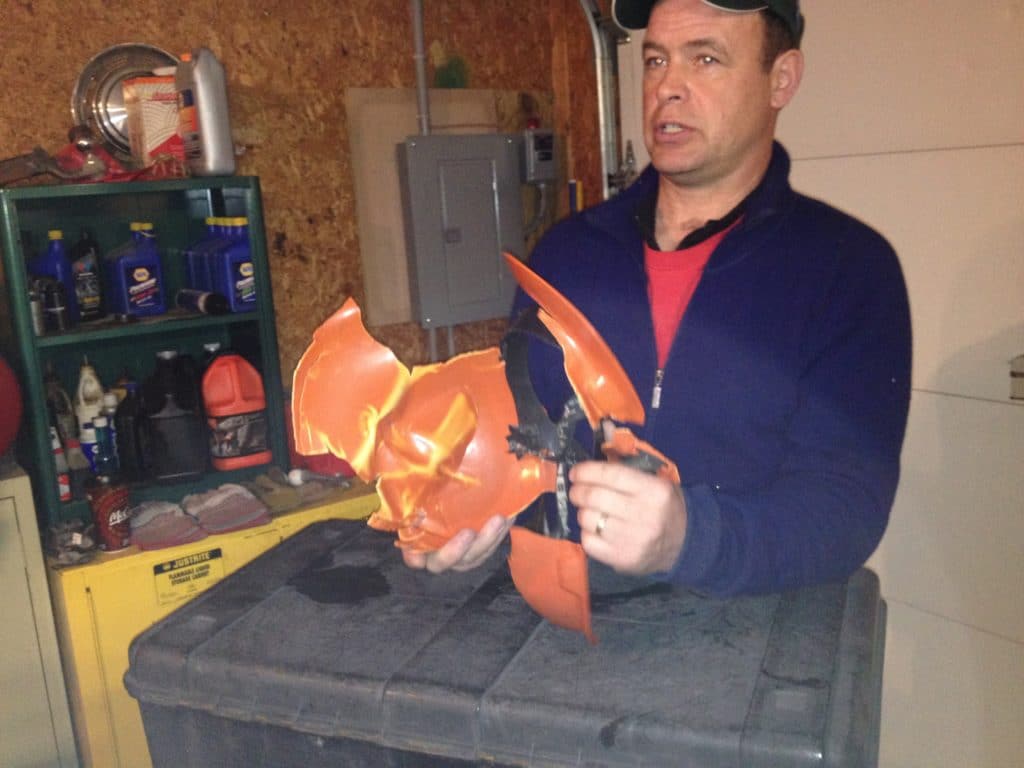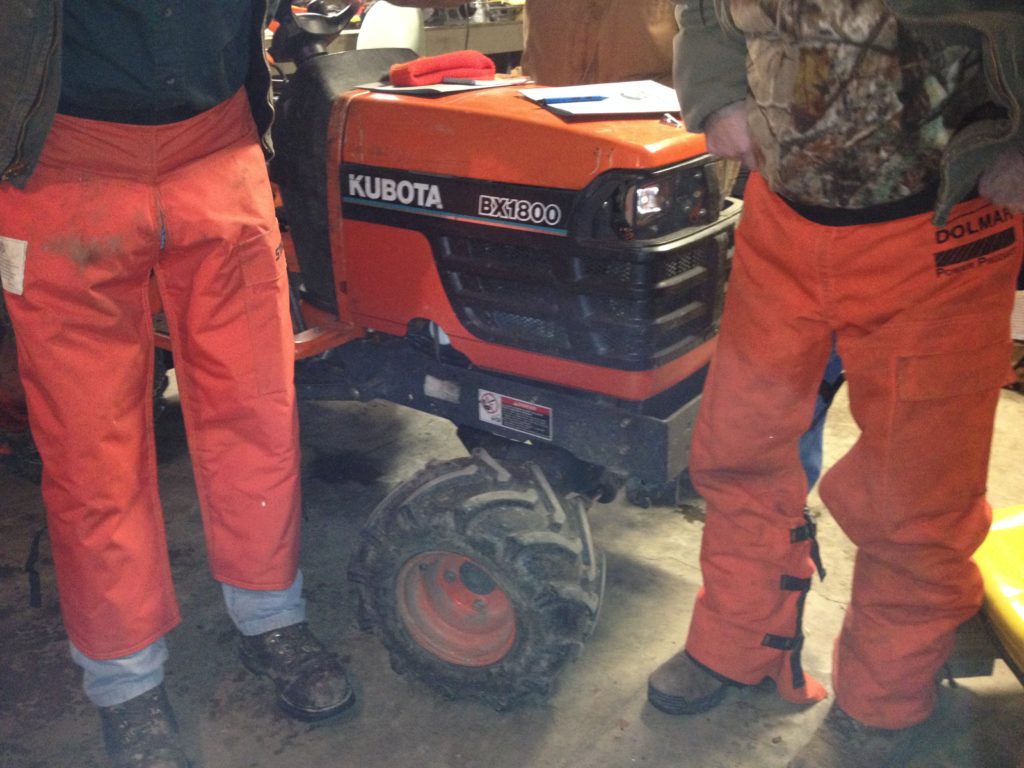Personal Protective Equipment: Chainsaw Safety, Part 2
Chainsaw Safety, Part One
This second part article on chainsaw safety is part of our CCE Chenango grant project done in collaboration with the New York Farm Viability Institute, “Increased Farm Profitability and Diversity through Value-Added Forest Products Initiative”. We have been encouraging farmers and woodland owners to develop forest based enterprises, many of which at one time or another require the safe use of chainsaws. In the Fall 2017 edition of SFQ I began with part I, “Chainsaw Safety, an Absolute Necessity”, in which I listed the general requirements for Personal Protective Equipment, or “PPE”.
To reiterate: head, hearing, eye and face, leg, foot, and hand protection needs to be present in order to safely and efficiently operate a chainsaw. The rest of this Part II article will deal with the specifics needed for each category of protection. Some good information on this topic can be found in the books “To Fell a Tree: A Complete Guide to Successful Tree Felling and Woodcutting Methods”, by Jeff Jepson, and the “Chainsaw Operator’s Manual: Chainsaw Safety, Maintenance and Cross Cutting Techniques”, published by ForestWorks; both books are available from online vendors.
Head, eye, ear, and face protection can all be accomplished by wearing a good quality helmet specifically designed for chainsaw use. OSHA, (Occupational Safety and Health Administration) requires it, and it would still be imperative to wear one even if it were not required by law. The helmet style that is becoming the standard among tree cutting professionals is the “helmet system”. The helmet incorporates a face shield for eye and face protection, earmuffs to reduce ear noise to a safe decibel level, and of course the

Bill Lindloff of the Game of Logging shows damage to a helmet that occurred during a logging event. Courtesy of Rich Taber.
helmet for head protection. Inspect your helmet daily for cracks, frayed straps, or other signs of damage to the shell, suspension, or helmet components. Repair of the helmet is NOT an option, and should be replaced every two or three years.
Hand protection can be provided for by using gloves; such as traditional leather, latex covered “gripper gloves”, and styles that are chainsaw resistant. Gloves protect your hands from injuries such as cuts, scratches, splinters, and burns and provide a firm grip on the things you handle daily while working: limbs, logs, chainsaws, rope, and other work related tools.
Leg protection is another necessity when working with chainsaws. The majority of chainsaw injuries occur on the legs and knees. It is important to wear protective pants, chaps, or bibs designed specifically for chainsaw use. Cheaply constructed pants are no bargain; typically no leg protectors are cut-proof. Instead, the fabric of leg protection is designed to slow or jam the cutters of the chainsaw when contact is made, thus reducing the severity of the injury.
Foot protection can be provided with a good work boot. Many woods workers use steel toed boots, which can protect feet from being crushed by logs rolling onto the user’s feet. There are many excellent places to acquire the required safety equipment. I suggest going to vendors who cater to the logging industry, rather than “big box” type stores. The personnel in the logging oriented businesses tend to be quite knowledgeable and helpful. The clerk in the big box store may not possess any firsthand knowledge for you to seek advice from.

Two different protective leg chaps are compared for the effectiveness of their lengths. Courtesy of Rich Taber.
The New York State Woodsmen’s Field Days that are held each year in Boonville, in August, are another excellent showcase for all kinds of forest industry equipment. Many of the vendors in attendance offer good discounts on merchandise during this three day event.
Again, one of my main motivations for writing this series on chainsaw safety has been the awful, unsafe, and unprofessional use of chainsaws that I sometimes see on television and that I have observe d in person. People are depicted “drop starting chainsaws”, running saws with loose chains, using saws with only one hand, and operating the saw with no personal protective equipment at all. Don’t be like those people!
Chainsaw Safety, Part Three
Chainsaw Safety, Part Four

